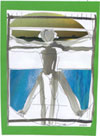|
The new federal dollars for healthcare offer an unparalleled opportunity to invest in the Vision of Health endorsed by the Government of Ontario in 1989: "We see an Ontario in which people live longer in good health, and disease and disability are progressively reduced. We see people empowered to realize their full health potential through a safe, non-violent environment, adequate income, housing, food and education, and a valued role to play in family, work, and the community. We see people having equitable access to affordable and appropriate health care regardless of geography, income, age, gender, or cultural background. Finally we see everyone working together to achieve better health for all."Some of the new monies could seed experimentation with new ways of "working together to achieve better health for all." These new dollars could encourage bridging boundaries — between sectors, organizations, professional practices, well-established interests groups, etc — in search of new collaborative relationships and practices to fulfill the broader notion of health espoused in the Vision.
Innovation occurs at the boundaries between mind-sets, not within the provincial territory of one knowledge and skill base.
Boundaries between practices, roles, needs, etc are fertile grounds for innovation. Bridging boundaries to "working together to achieve better health for all" is not a matter of imposing formal structures, however. It is first and foremost a matter of bridging boundaries between mind-sets. A shift in deeply rooted beliefs about what is valuable and useful is possible when stakeholders with diverse backgrounds, roles, perspectives, values and motivations intermix to:
Self-managed work groups, empowered and distributed leadership, community building, appreciation of diversity, practical breakthroughs — all happen spontaneously in an Open Space environment where participants do what comes naturally: share stories, discover what already exists, explore differences and common ground to find other ways to meet needs, recruit allies, and take action with others sharing the same interest.
How people decide to act in a system
In creating the conditions for self-organization, OST taps into the same dynamics that foster the formation and growth of communities of practice (CoPs). A CoP is an informal network that self-organizes around a common purpose and a desire to know what each other knows. A CoP provides a "social space" for members' ideas to be scoped out and experimented with in order to solve problems, improve existing practices or evolve new ones.
is part of a system's structure. Changing the basis of people's decisions changes the structure. As informal channels of communication and collaboration bridging formal/functional boundaries, CoPs can serve as key enablers of system reform. New, enduring ways of "working together to achieve better health for all" are not declared by fiat but emerge in the overlaps and alliances between disparate CoPs that have discovered an intersection of interest (at the boundaries between mind-sets...) We live in a society of organizations,
This strategy for investing in the Vision of Health is grounded in the complex adaptive systems perspective. From that viewpoint, human systems (like healthcare) are understood as "living systems" that are chaotic, complex, creative, ambiguous, paradoxical, uncontrollable, unpredictable and filled with conflicting values, choices and demands. And the more complex the system, the more its self-organizing dynamics have to be relied upon to achieve and maintain desired results and qualities.
thus, the discovery of new organizing methods may be our best chance to solve many of the world's most complex problems. The self-organizing dynamics underpinning social order (like healthcare) operate mainly in the mental realm. A mind-set — specific knowledge, beliefs, value judgments, feelings, and assumptions that shape how we choose to perceive and interact with everything, everyone, every event — is a "mental order." Collectively, mind-sets shape social order — shape ways of being and working together. Bridging mind-sets is about opening to "strange and different" information. This ambiguous, disconfirming, contradictory information can then self-organize into new experiences, new knowledge, new possibilities for action, new ways of being and working together. Genuine change in mind-set is a matter of personal choice and responsibility. The journey from contentment (with status quo) to denial (of need for change) to confusion (living the anxiety) to renewal (new mental order) is a personal one which can not coerced. It can, however, be invited or inspired by reflective discourse in voluntary networks of reciprocation and trust (like CoPs.)
We can no longer stand at the end of something we visualize in detail and plan backwards from that future. Instead, we must stand at the beginning, clear in our intent, with a willingness to be involved in discovery.
My commitment is to invest in the Vision of Health through community synergy and knowledge management. How can you help me turn this commitment into action?
|
|||||||||||||||||||||

